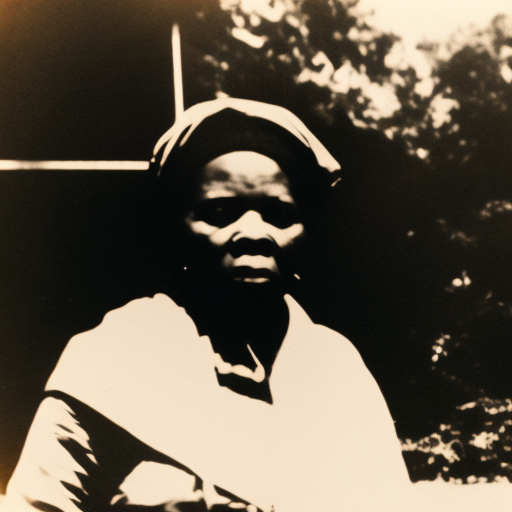Summary:
Harriet Tubman was an African American abolitionist and political activist who played a significant role in the Underground Railroad, a network of secret routes and safe houses used by enslaved African Americans to escape to free states and Canada. Born into slavery in Maryland around 1822, Tubman escaped to freedom in 1849 and subsequently made numerous dangerous trips back to the South to rescue others. She became one of the most prominent conductors of the Underground Railroad, leading around 70 enslaved individuals to freedom. Tubman also served as a spy, nurse, and scout for the Union Army during the American Civil War. After the war, she dedicated her life to advocating for women’s suffrage and the rights of African Americans.
Early Life and Escape:
Harriet Tubman was born into slavery on a plantation in Dorchester County, Maryland. She endured harsh treatment and witnessed the separation of her family members through sales. In 1849, Tubman escaped to Philadelphia, Pennsylvania, with the help of the Underground Railroad. Determined to liberate her family and others, she made numerous return trips to Maryland, risking her life to guide enslaved individuals to freedom.
The Underground Railroad:
Tubman’s knowledge of the landscape and her ability to navigate by the North Star made her an invaluable asset to the Underground Railroad. She used disguises, secret codes, and safe houses to lead enslaved individuals to freedom. Tubman’s reputation as a skilled conductor grew, and she became known as “Moses” for leading people out of slavery, referencing the biblical figure who led the Israelites out of Egypt.
Abolitionist and Civil War Contributions:
During the 1850s, Tubman worked closely with other abolitionists, including Frederick Douglass and John Brown. She supported Brown’s plan to raid the federal arsenal at Harpers Ferry, Virginia, in an effort to initiate a slave rebellion. Although the raid failed, Tubman’s commitment to the abolitionist cause remained unwavering.
When the American Civil War broke out in 1861, Tubman served as a nurse, cook, and spy for the Union Army. She provided valuable intelligence to Union commanders by gathering information from enslaved individuals and scouting Confederate positions. Tubman’s knowledge of the local terrain and her ability to move undetected made her an invaluable asset to the Union war effort.
Later Life and Legacy:
After the war, Tubman settled in Auburn, New York, where she continued her activism and humanitarian work. She established the Harriet Tubman Home for the Aged, providing care and support for elderly African Americans. Tubman also became involved in the women’s suffrage movement, working alongside prominent suffragists such as Susan B. Anthony and Elizabeth Cady Stanton.
Tubman’s contributions to the abolitionist movement and her heroism as a conductor on the Underground Railroad were widely recognized during her lifetime. She became an icon of courage and resilience, inspiring generations of activists. In 2016, it was announced that Tubman would replace Andrew Jackson on the front of the $20 bill, making her the first African American and woman to be featured on U.S. currency.
Harriet Tubman’s legacy as an abolitionist, humanitarian, and advocate for equal rights continues to resonate today. Her bravery and determination in the face of adversity serve as a reminder of the power of individual action in the pursuit of justice and freedom.












